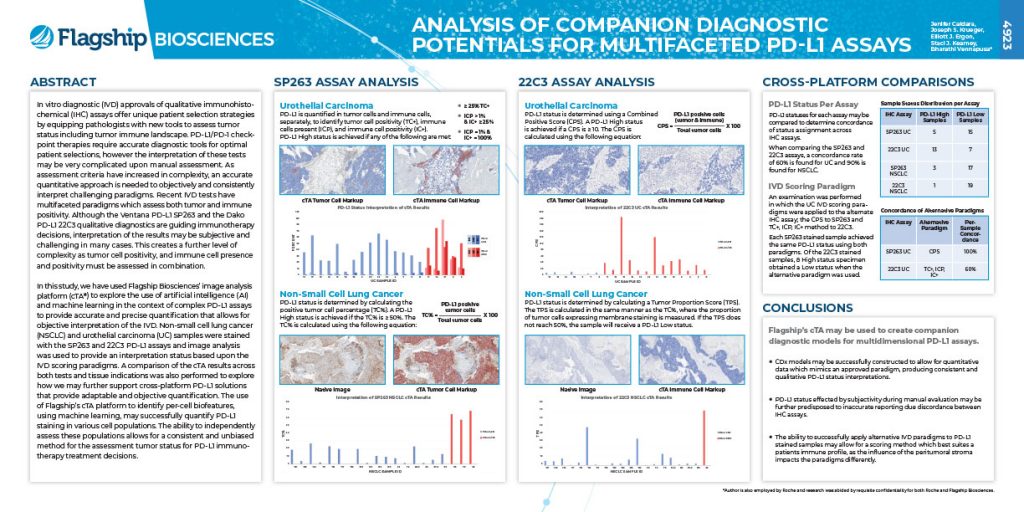ABSTRACT
In vitro diagnostic (IVD) approvals of qualitative immunohistochemical (IHC) assays offer unique patient selection strategies by equipping pathologists with new tools to assess tumor status including tumor immune landscape. PD-L1/PD-1 checkpoint therapies require accurate diagnostic tools for optimal patient selections, however the interpretation of these tests may be very complicated upon manual assessment. As assessment criteria have increased in complexity, an accurate quantitative approach is needed to objectively and consistently interpret challenging paradigms. Recent IVD tests have multifaceted paradigms which assess both tumor and immune positivity. Although the Ventana PD-L1 SP263 and the Dako PD-L1 22C3 qualitative diagnostics are guiding immunotherapy decisions, interpretation of the results may be subjective and challenging in many cases. This creates a further level of complexity as tumor cell positivity, and immune cell presence and positivity must be assessed in combination.
In this study, we have used Flagship Biosciences’ image analysis platform (cTA®) to explore the use of artificial intelligence (AI) and machine learning in the context of complex PD-L1 assays to provide accurate and precise quantification that allows for objective interpretation of the IVD. Non-small cell lung cancer (NSCLC) and urothelial carcinoma (UC) samples were stained with the SP263 and 22C3 PD-L1 assays and image analysis was used to provide an interpretation status based upon the IVD scoring paradigms. A comparison of the cTA results across both tests and tissue indications was also performed to explore how we may further support cross-platform PD-L1 solutions that provide adaptable and objective quantification. The use of Flagship’s cTA platform to identify per-cell biofeatures, using machine learning, may successfully quantify PD-L1 staining in various cell populations. The ability to independently assess these populations allows for a consistent and unbiased method for the assessment tumor status for PD-L1 immunotherapy treatment decisions.
CONCLUSIONS:
Flagship’s cTA may be used to create companion diagnostic models for multidimensional PD-L1 assays.
- CDx models may be successfully constructed to allow for quantitative data which mimics an approved paradigm, producing consistent and qualitative PD-L1 status interpretations.
- PD-L1 status effected by subjectivity during manual evaluation may be further predisposed to inaccurate reporting due discordance between IHC assays.
- The ability to successfully apply alternative IVD paradigms to PD-L1 stained samples may allow for a scoring method which best suites a patients immune profile, as the influence of the peritumoral stroma impacts the paradigms differently.

